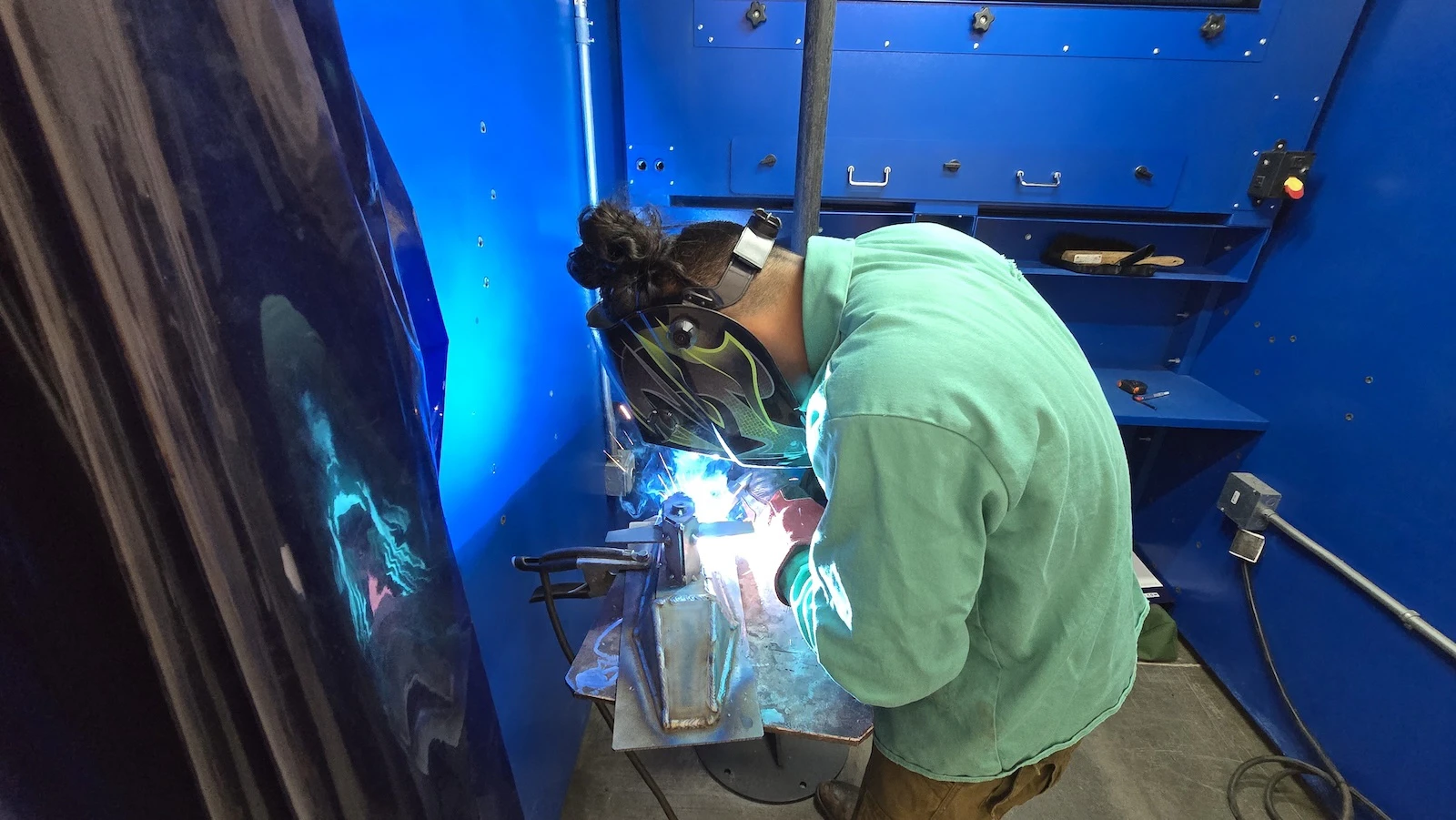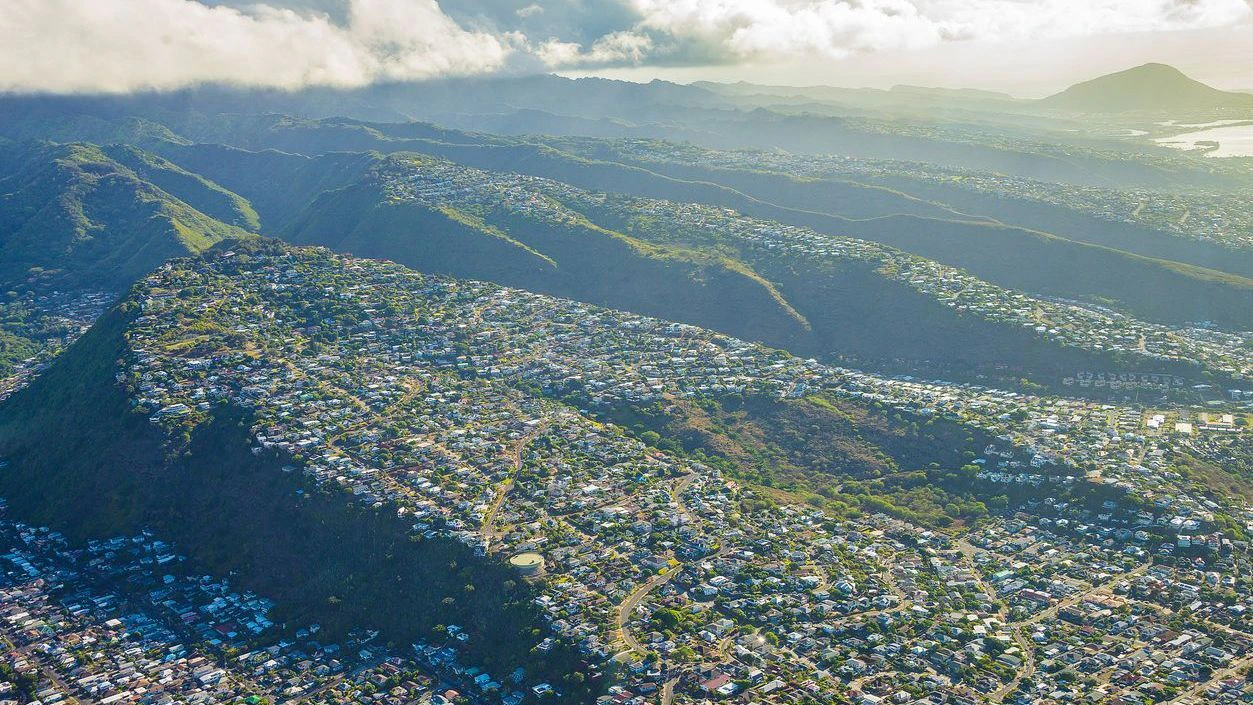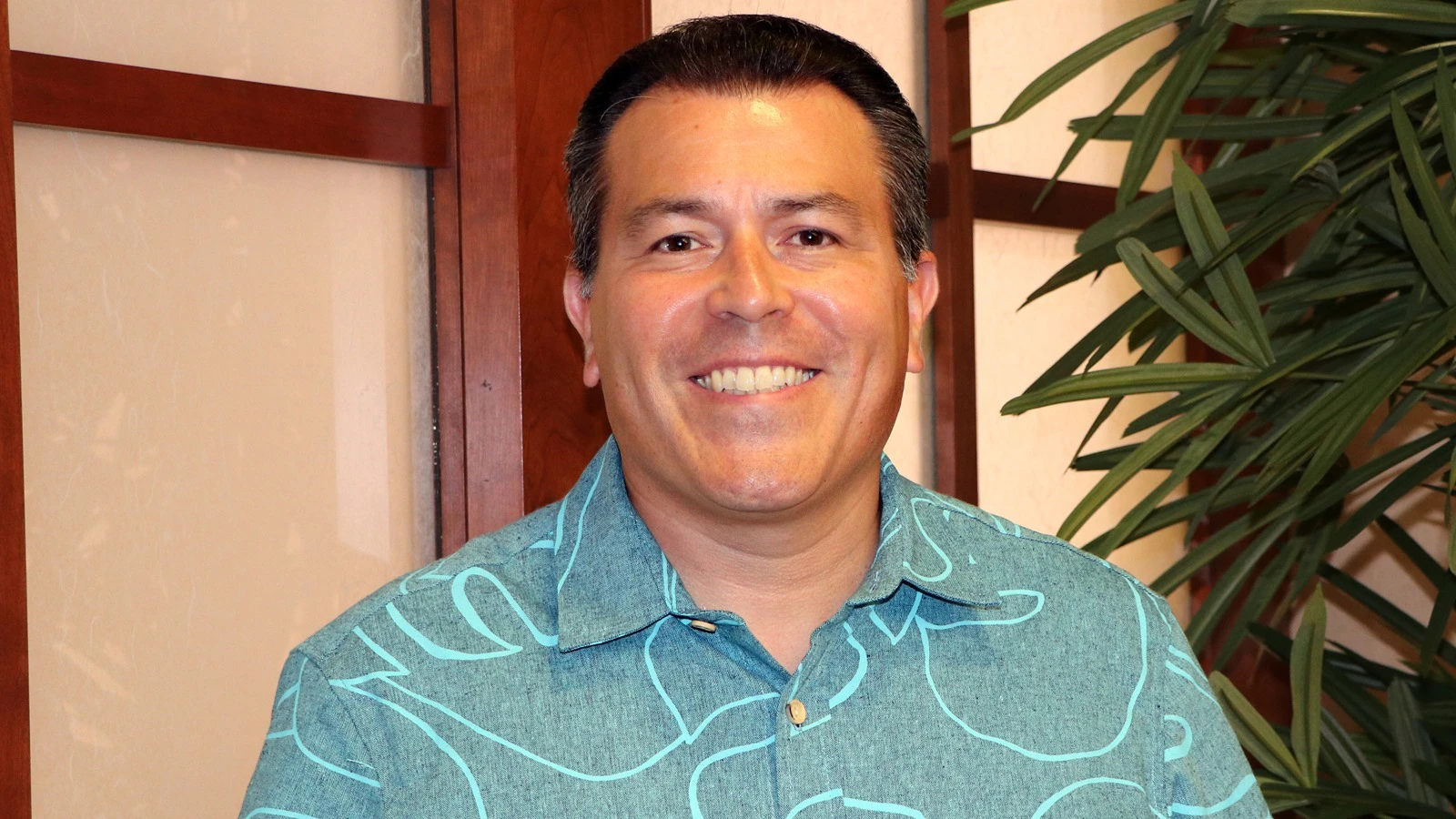Sparks were flying in Kapolei — literally — as high school students from around the Islands wielded their welding equipment.
"About 35 minutes! 35 minutes!" Ryan Eubank, welding specialist for Project MFG, shouted as the sound of grinding metal filled the air.
Eubank was counting down the minutes. Students from Waipahu, Leilehua, Hilo, Mililani, Kapa‘a, Kealakehe, Kohala and Pāhoa high schools came to showcase their welding skills in the Project MFG student Maritime Welding Competition and career exploration day, held March 28 at the Hawai‘i Carpenters Apprenticeship and Training Fund in Kapolei.
Eubank told Aloha State Daily that the competitors were using a process called GMAW, or gas metal arc welding. Students, he said, have to be able to read the blueprints, follow the work instructions, read the weld procedure specifications and fabricate the component.
"That's exactly what they would have to do when they go out into the real world — be able to read the blueprint, follow directions, to be able to build whatever part or component they have to be able to do," Eubank said. "So this is the real life application. Then, the most important thing that we're teaching them is time management."
The competitors had two hours to finish the challenge.
By the end of the day, three prevailed: Caleb Robinson from Miliani High School took first place, Sean Ibarra from Kealakehe High School took second, and Alden Delos Santos from Waipahu High School took third.
The competition was hosted by Project MFG in partnership with Ku‘i Hao, the state Department of Education, the U.S. Department of Defense and the U.S. Navy.
According to an announcement from Project MFG, an organization that's working to "elevate the next generation of highly skilled trade professionals," the goal of the event was to raise awareness of local opportunities for "well-paying careers in in maritime manufacturing, such as welding, machining and logistics," and for local companies to share specific career opportunities available within the community.
"We're trying to start skilling up our youth to obtain some of the critical jobs that we have available for them after graduation," Eubank told ASD.
Just at the U.S. DOD, Eubank says there will be thousands of projected welding and machining trade jobs available in the next three years.
If you take a look at a website that seeks people to help build U.S. Naval submarines — buildsubmarines.com — there are currently 100,000 open roles.
"Lately, these kids can graduate high school making anywhere from $60,000 to $150,000 a year as soon as they graduate from high school," Eubank said. "There are more jobs available probably paying $80,000 to $120,000 than there are between $40,000 and $60,000 because they are all infrastructure jobs. And when we talk about pipelines and refineries and new construction and ship-building and nuclear subs and [U.S] Army tanks, it is just huge how much of a need there is.
"There's a new international currency out there, and that's skilled people. It's not diamonds, it's not precious gems, it's not precious metals, it's not crypto — it's skilled people."
And through the career awareness portion of the event, students could get an idea of jobs that are available in their industry.
"These jobs that these students can obtain, can price them right back into paradise," Eubank said. "Instead of graduating from high school and not knowing where to go, if they get a job in the welding trade, the machining trade, the carpentry trade, the electrical trade or any of those trades, it's going to price them right back into paradise."
Leila-Kai Arizo, a senior at Leilehua High School, doesn't weld yet, but is just now starting to learn.
Her goal that Friday was to learn more about welding to implement the skill into a future automotive career.
"I work at a dealership right now. Welding is a good skill to have because there are certain recalls or thing that you'll need to do. It would make a good impression when you go to a dealership and [say], 'I have welding skills.' Because that's a secret skill that they want."
Jan Borja, a junior at Waipahu High School, says he got into welding his freshman year after his teacher recommended it.
He says welding was something he wanted to pursue because "it really gives me an opportunity after high school to get into trade school and maybe get into companies that are looking for welders that I [will be able] to contribute [to]."
Theresa Sanchez, an educational specialist with the DOE's Workforce Development Branch, says the department is "trying to increase work-based learning opportunities for students who are looking to enter directly into careers after high school."
What do the students get from a competition like this? Two things, according to Sanchez.
First, it's engaging with people in the industry to learn about careers in the skilled trades and building and construction industry that they might now have known about before, she says. It also offers a closer look into areas they might already know a bit about.
A second benefit is to "value career paths that don't go through college," Sanchez says. "Just to honor their interest in that. That they're not just going to be a welder. They're going to be a welder. That's not a 'just.'
Sometimes students get the narrative from the community or their parents that they must go to college, she said.
"But the welding profession in Hawai‘i, with the defense industry, is very promising. There are many openings now, and there will be in the future in the defense industry around skilled trades, and especially welding. We want our students to be globally competitive for those positions because right now, they're primarily filled with people not from Hawai‘i. So we want to equip our students to be able to fill those workforce needs in the state."
Stephanie Salmons can be reached at stephanie@alohastatedaily.com.





